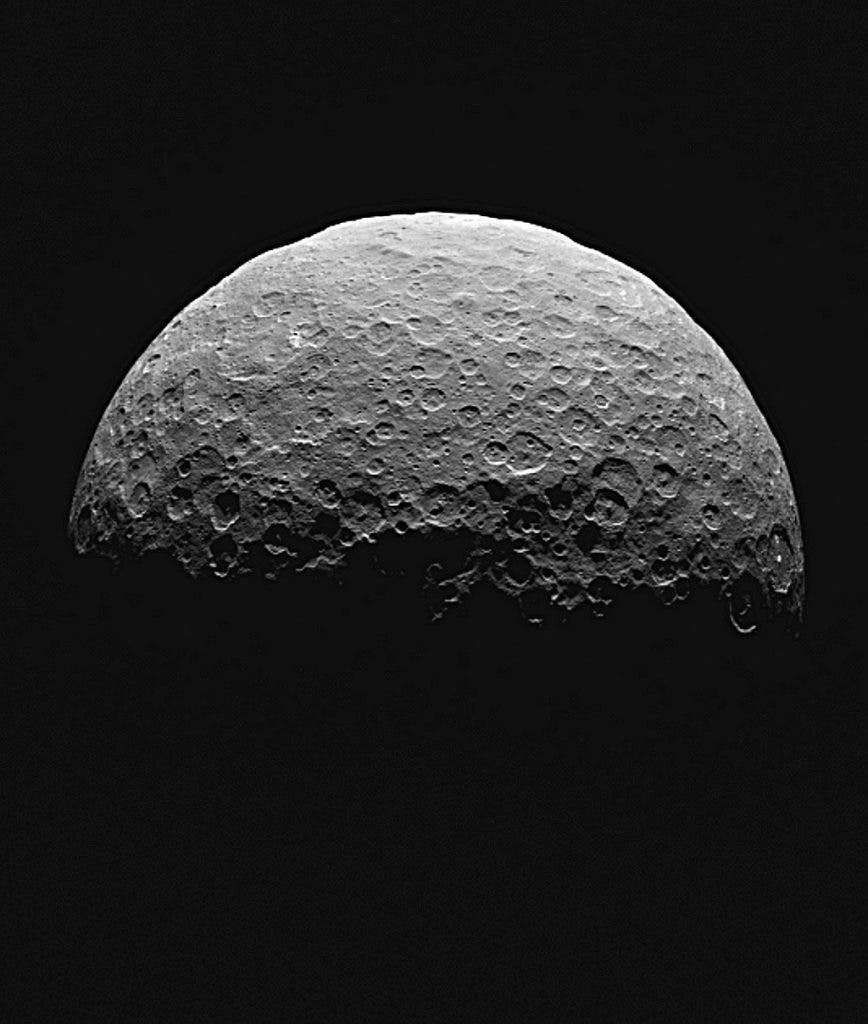Ceres contains shadowy regions that may be cold enough to trap water ice for up to a billion years, according to a new study.

New data from NASA’s Dawn mission has revealed the presence of craters on Ceres that exist in permanently shadowed regions of the dwarf planet. Due to the low temperatures of these areas, scientists believe that these regions could hold ice deposits that stem from water ice that has remained trapped for approximately one billion years
“The conditions on Ceres are right for accumulating deposits of water ice,” said Norbert Schorghofer, a researcher from the University of Hawaii at Manoa and first author of the study. “Ceres has just enough mass to hold on to water molecules, and the permanently shadowed regions we identified are extremely cold – colder than most that exist on the moon or Mercury.”
The regions of Ceres subject to permanent shadow are craters that are not exposed to direct sunlight. Typically, these areas are located along crater floors or sections of their walls that face toward the pole. Although these regions are still subject to indirect sunlight exposure, when temperatures remain below minus 151 degrees Celsius they become a prime location for the stable accumulation of water ice – also known as a cold trap.
Schorghofer and his team made their findings through the examination of Ceres’ northern hemisphere, which was chosen due to its more favorable illumination conditions compared to the south. NASA’s Dawn cameras revealed Ceres’ craters, plains and other unique features in three dimensions.
In combination with computer modeling, the data was used to reveal the presence of numerous shadowed regions across the northern hemisphere, with the largest located inside a 10-mile-wide crater.
Due to the distance of Ceres from the sun, the permanently shadowed regions outlined in the new study are suggested to be colder than those on Mercury or the moon.
“On Ceres, these regions act as cold traps down to relatively low latitudes,” said Erwan Mazarico, a Dawn guest investigator at NASA’s Goddard Space Flight Center and co-author of the study. “On the moon and Mercury, only the permanently shadowed regions very close to the poles get cold enough for ice to be stable on the surface.”
Although Ceres’ permanently shadowed regions take up less than one percent of the surface area of its northern hemisphere, approximately one in every 1,000 water molecules created on its surface will end up in a cold trap during any given year on the dwarf planet. Over the period of around 100,00 years, these cold traps could lead to the creation of thin but detectable ice deposits.
“While cold traps may provide surface deposits of water ice as have been seen at the moon and Mercury, Ceres may have been formed with a relatively greater reservoir of water,” said Chris Russell of the University of California, Los Angeles and first author of the study. “Some observations indicate Ceres may be a volatile-rich world that is not dependent on current-day external sources.”
Journal Reference: The permanently shadowed regions of dwarf planet Ceres. Published 6 July 2016. 10.1002/2016GL069368


